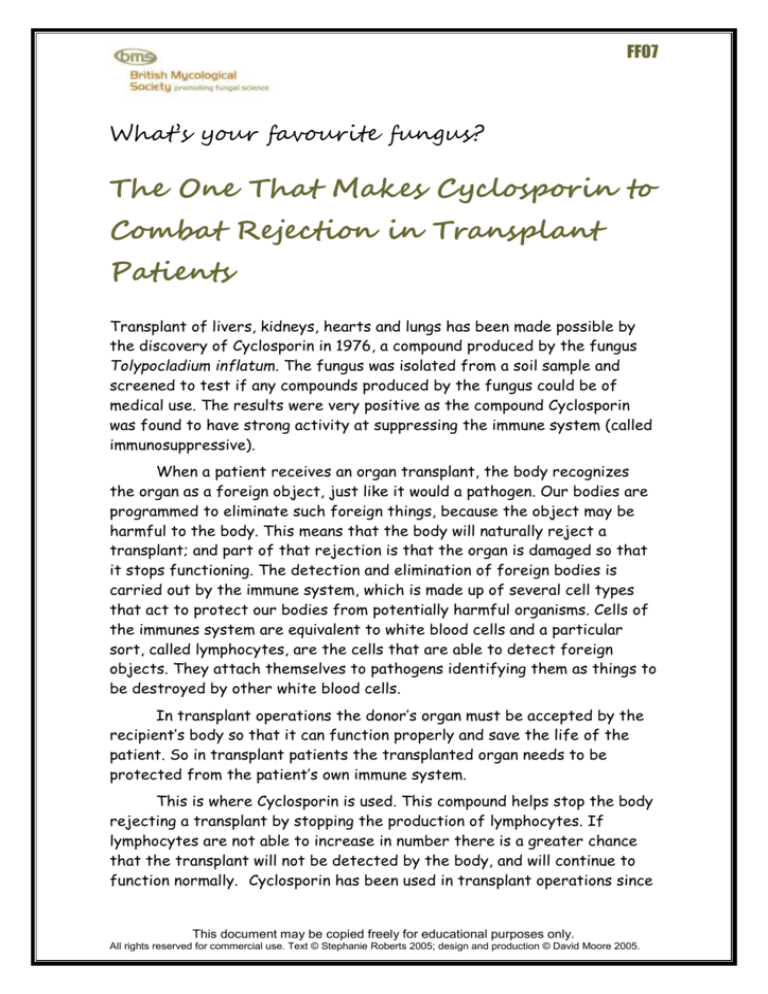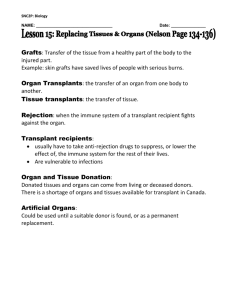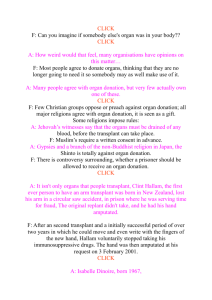
FF07
What’s your favourite fungus?
The One That Makes Cyclosporin to
Combat Rejection in Transplant
Patients
Transplant of livers, kidneys, hearts and lungs has been made possible by
the discovery of Cyclosporin in 1976, a compound produced by the fungus
Tolypocladium inflatum. The fungus was isolated from a soil sample and
screened to test if any compounds produced by the fungus could be of
medical use. The results were very positive as the compound Cyclosporin
was found to have strong activity at suppressing the immune system (called
immunosuppressive).
When a patient receives an organ transplant, the body recognizes
the organ as a foreign object, just like it would a pathogen. Our bodies are
programmed to eliminate such foreign things, because the object may be
harmful to the body. This means that the body will naturally reject a
transplant; and part of that rejection is that the organ is damaged so that
it stops functioning. The detection and elimination of foreign bodies is
carried out by the immune system, which is made up of several cell types
that act to protect our bodies from potentially harmful organisms. Cells of
the immunes system are equivalent to white blood cells and a particular
sort, called lymphocytes, are the cells that are able to detect foreign
objects. They attach themselves to pathogens identifying them as things to
be destroyed by other white blood cells.
In transplant operations the donor’s organ must be accepted by the
recipient’s body so that it can function properly and save the life of the
patient. So in transplant patients the transplanted organ needs to be
protected from the patient’s own immune system.
This is where Cyclosporin is used. This compound helps stop the body
rejecting a transplant by stopping the production of lymphocytes. If
lymphocytes are not able to increase in number there is a greater chance
that the transplant will not be detected by the body, and will continue to
function normally. Cyclosporin has been used in transplant operations since
This document may be copied freely for educational purposes only.
All rights reserved for commercial use. Text © Stephanie Roberts 2005; design and production © David Moore 2005.
FF07
1983, and is currently the most effective and widely used
immunosuppressive drug.
This document may be copied freely for educational purposes only.
All rights reserved for commercial use. Text © Stephanie Roberts 2005; design and production © David Moore 2005.



